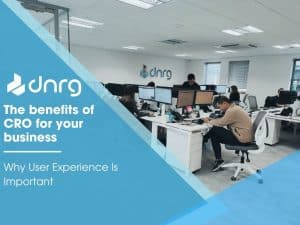In times of hardship due to the recent global pandemic, it’s understandable that consumers as a whole take more time to consider the purchases that they make. From retail to housing, consumers are much more aware of where, how and why they are spending their money in all sectors, making the global landscape for all businesses harder to thrive in.
With this being said, consumers are not scared of parting ways with their money. Purchasing a product or a service has only gotten more popular since lockdown, with over 70% of people stating they are shopping online more than ever before. A study shows that over 75% of people are shopping at least once a month online. Convenience has become increasingly important for consumers so it makes sense as to why this upward trend is being seen so widely across sectors.
If you take a look at any sector that has shown growth in 2020/2021, you can see businesses adapting for this convenience appeal. Food delivery services are a clear example of this, as globally, it’s worth more than $150 billion, having more than tripled since 2017. British company Cazoo, an online car retailer, has reported a £208 million increase in their revenue, up from £40 million in 2020 as its service offers delivery for its vehicles to your doorstep. The COVID-19 pandemic and the subsequent lockdowns it’s caused if nothing else, have demonstrated that it is in human nature to crave convenience.
Humans crave convenience
It’s this appetite for convenience that makes the overall user experience so important for a website. Humans crave convenience as we are hard-wired to follow the easier path. We naturally want to make our lives easier, so when it comes to purchasing a product or a service through a website, why would someone choose to make it difficult for themselves?
If you consider your website as the first thing a potential customer will interact with, how does it represent you? Does the website match your client’s needs and does it fulfil what it needs to in order to ease a user to convert? These are the questions that are posed when you try to analyse your website’s UX.
Making your website as convenient as you can to the users that are clicking onto your website can only benefit you and your business. This scales to any size of business, as you’re refining the experience your existing users have on your site. Conversion Rate Optimisation (CRO) in itself is a process that lends itself to convenience, allowing you to make your website more effective, making the most out of the traffic you already have.
By simplifying quote forms, check-out processes and your call-to-action(s), you are improving your website to lend itself towards human nature. At the end of the day, convenience always wins.
Why you should be considering CRO for your business
Refining the presence that you have online has never been more vital to the strength, success and growth of a business. This has been demonstrated by hundreds of businesses that have had to close their doors because they weren’t able to adapt quick enough.
Conversion Rate Optimisation has the ability to transform your website and increase the ROI you’re seeing on your current marketing spend. Any conversion optimisation agency will tell you that its benefit is founded in the tests that you run. The way we carry out CRO involves A/B tests in order to build data that we can use as a comparison point. An example we would love to highlight is for a client that we’ve worked on this year:
Our case study comes from a drainage company that we have worked with to improve conversion rates across the site. We began with a few A/B tests, adding features and elements to a page that we think will improve the conversion rate, whilst leaving the second page to act as our control.
From these tests, we have seen conversion rate increases of 313.63%. The test below was focusing on phone calls, acting as the businesses most profitable conversion. Over a period of 45 days, you can see that the elements we added on our test page have increased the conversion rate from 1.10% to 4.58%, obtaining 15 conversions vs. 3 conversions in the control.
We have seen similar results with other clients we have worked with, both working on site-wide as well as landing page-specific changes. From pop-up widgets to altering product imagery to best serve the user, our CRO platform allows us to make changes according to actual data and not assumptions.
CRO also gives your business to understand actual user data. This works in conjunction with Google Analytics to provide you with a summarised insight into the makeup of your websites’ users. This gives you a better understanding of how your customers are actually using the website, providing you with the information needed to better design your website’s UX.
This involves how they are interacting with your website on a page level, understanding which elements are being focused on, which elements are being ignored as well as how much information your users are viewing. These insights are invaluable to a business that seeks to push sales online, especially if there is room to grow in its average conversion rate.
Whilst marketing spend is primarily focused on attaining new business, consideration should be taken to try and make the most out of your existing client base. CRO places itself in the middle of an arsenal of marketing channels, providing you with data that has the ability to improve other avenues of marketing. If you are interested in CRO for your website and would like to enquire about an opportunity to improve your website’s UX, get in touch with Alex, our CRO manager. Whilst we are not primarily a CRO agency, we do believe in it’s effectiveness at improving CTR and have seen the positive results that it can provide.





